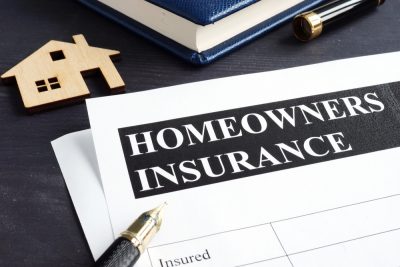Beyond the headlines: What’s truly driving your home insurance costs?
Homeowners across the U.S. have been hit with steep insurance rate hikes, leaving many wondering, “What’s causing this?”. The answer isn’t as straightforward as it might seem.
Insurance rates aren’t something you can easily adjust. While insurers are pressured to keep premiums affordable to stay competitive, lowering prices can make it harder for them to cover insured losses. On top of that, insurance is deeply woven into the fabric of the economy—from individual homeowners to industries and corporations. This means the state often has a hand in influencing these rates. But any changes from insurance regulators usually come after lengthy discussions and back-and-forth decisions, leaving insurers and consumers in a tough spot.
If you’ve noticed your premiums climbing in the past few years, you’re not alone. The combination of rising construction costs, extreme weather events, and even legal system abuse is pushing insurance rates higher. Let’s take a closer look at the factors driving these price increases and what they mean for homeowners.
Why are homeowners’ insurance rates going up?
There are a few big reasons behind the rise in property insurance rates.
One of the major factors is the increase in natural catastrophes. Hurricanes, tornadoes, wildfires, floods—you name it, and they’ve all been ramping up in frequency and severity.
Just this year, over 12 hurricanes have struck, causing at least 370 fatalities and over $180 billion in damage. The strongest, Hurricane Milton (Category 3), hit Florida on October 9, knocking out power for over 3 million homes and businesses
Inflation
Natural disasters might be the headliners, but they’re not the only reason your homeowners insurance bill is climbing.
Another major factor is the rising cost of rebuilding homes after a disaster. Since 2020, construction costs have surged by nearly 28%, with labor costs alone up by 12%. This matters because the amount of insurance you need is closely tied to how much it would cost to rebuild your home. When these costs increase, so do your premiums.
On top of that, inflation following the COVID-19 pandemic has driven up the price of essential construction materials like lumber, steel, and cement, pushing replacement costs even higher.
Legal system abuse: Adding to the problem
But there’s an unexpected culprit contributing to higher insurance premiums: legal system abuse.
Triple-I CEO Sean Kevelighan calls this phenomenon “billboard attorneys” pushing Americans toward litigation as a first step. This legal system abuse drives up costs for everyone because insurance companies have to pay out more for claims that go to court.
Third-party litigation funding, in particular, has turned into a multibillion-dollar industry, where outside investors—sometimes even foreign governments—finance lawsuits for profit. This hidden “dark money” not only raises premiums but also creates national security concerns.
Some states are hit harder than others
Not all states are seeing the same rate increases.
If you live in a high-risk area for natural disasters, you’re probably noticing a bigger bump. States in the Southeast and Southwest are seeing substantial increases due to the rising number of climate disasters, with some areas even becoming “uninsurable” due to the high risk of hurricanes or wildfires.
A Bankrate analysis found that the average homeowners’ insurance premium in 2024 was around $2,285 per year—up 23% from January 2023.
In less-risky areas, rates are significantly lower. For instance, the average cost of homeowners insurance in Vermont is $806, in Delaware $966, and in Alaska $995. This is a wide contrast to premiums in higher-risk states like Nebraska at $5,655 per year, Florida at $5,527, and Oklahoma at $4,835
What can homeowners do to lower their insurance costs?
With all these rising costs, you’re probably wondering how you can lower your premiums. Fortunately, there are some steps you can take to soften the blow.
First, shop around. Most major insurers offer competitive rates and provide bundling options if you combine your home and auto insurance. Bundling can sometimes save you as much as 25%. Plus, many companies offer replacement cost coverage, which can be a real lifesaver if your home suffers significant damage.
You can also raise your deductible. By increasing your deductible from $500 to $1,000, you could save up to 25% on your monthly premiums depending on the carrier. Just make sure you’ve got enough in your emergency fund to cover that deductible if something does happen.
Finally, check your credit. In most states, insurance companies factor your credit score into your premiums. Improving your credit by making on-time payments and reducing your debt can help lower your insurance costs over time.
Looking forward
The good news is that while homeowners’ insurance premiums are rising, there are ways to mitigate the costs. As the Federal Reserve lowers interest rates to cool inflation, we could see some moderation in home insurance growth as well. But in the meantime, it’s smart to review your policy, shop around for better rates, and take steps to reduce your insurance expenses where you can.
In the end, homeowners’ insurance is essential—especially in a time when natural disasters are becoming more common. However, staying proactive about your policy can help keep those rising premiums from getting the best of you.


